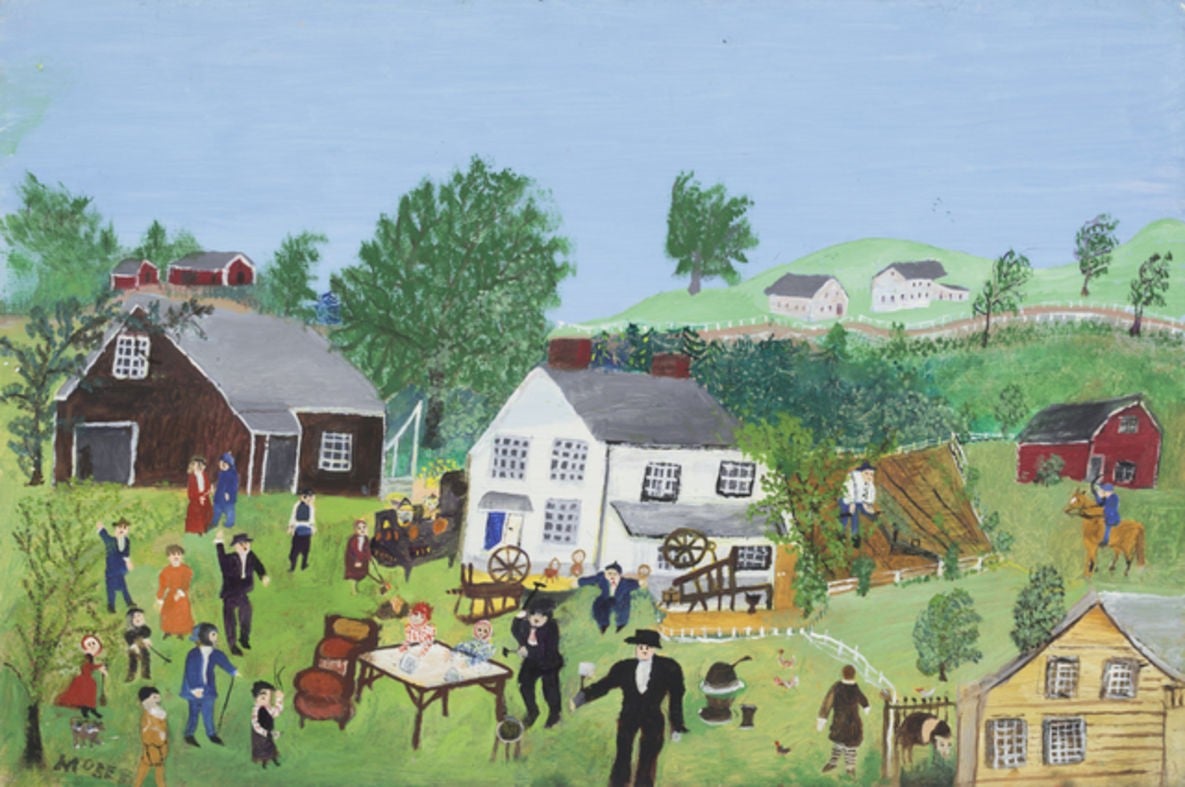All too often, we’re presented with stories of how creativity and genius are correlated with the exuberance of our younger self.
Orson Welles with “Citizen Kane.” Mozart with his Piano Concerto No. 9. Herman Melville and “Moby Dick.” Each of these accomplishments occurred before the creator reached the end of their twenties.
If you happen to be a fan of sports, you’re constantly confronted by the generational talent that blossoms at an early age. Where sport rewards speed and agility found in a younger form, it’s also combined with the constant practice and work ethic required of the best athletes to rise to the top. Prodigious athletic talent has a way of rising up at a young age.
For creatives, it’s been said, precocity in childhood is a harbinger of the genius that will shortly follow.
But that’s not exactly true. We’re here to squash one of life’s biggest misconceptions. Your ability to tap into genius and unfettered creativity is not directly linked to your age.
Believe it or not, there was a time when it was commonly agreed upon in the psychology community that creativity diminished as you got older.
One researcher, Harvey Lehman, concluded in 1953 that “Superior creativity rises relatively rapidly to a maximum which usually occurs in the thirties and then falls off.” He considered this to be correlated with a decrease in our situational awareness and the ability to acquire new tools and techniques for looking at things as we age.
Lehman’s research was capped by his findings in “Age and Achievement” that achievements, regardless of vertical (art, poetry, fiction) was a bell curve.
Dean Simonton, a psychologist at the University of California-Davis, furthered that thinking by suggesting that the age of our creative peak was limited and determined by what creative pursuits we’re engaged in. He honed in on poetry, finding that they peaked far earlier than, say, a novelist who must craft their work over long periods of time.
Much of this thinking has continued well into the 1980s. Colin Martindale’s research said that “In general, a person’s most creative work is done at a fairly early age.” Well, we have a whole list of people who accomplished great, creative works well beyond an “early age.”
Perhaps one of the most interesting academics to evolve thinking within this space is professor of economics at the University of Chicago, David Galenson. He studied dozens of creative masters leading to the conclusion that in this modern era there are two types of creative artists governed by their distinct styles and methods: conceptual executors and those motivated by aesthetic experimentation.
🎨Aesthetic Experimentation

Artists that are motivated and influenced by experimentation reach their achievements fueled by visual cues. Cézanne is a classic example of an artist who considered his work as incremental experiments and gradual improvements on their craft over a great period of time. For example, Cézanne’s great work is one he took on in his sixties, “Les Grandes Baigneuses.”
⚙️Conceptual

These artists are driven — born to articulate their emotions and ideas in precise terms. They’ll prepare for larger artistic works with the aid of sketches and diagrams. According to Galenson, “Unlike experimental artists, whose inability to achieve their vague goals can tie them to a single problem for a whole career, the conceptual artist’s ability to consider a problem solved can free him to pursue new goals.” One of the classic examples of a conceptual artist is Pablo Picasso.
So, how can we compare the creativity and equate it to some measure of success for these two different styles of creative thinkers? Malcolm Gladwell explored this topic. Gladwell touched on how Galenson’s research suggests that, more so than the conceptual artist, the aesthetic experimenter’s works occurred later in life and were the artist’s most successful endeavors:
Galenson did a simple economic analysis, tabulating the prices paid at auction for paintings by Picasso and Cézanne with the ages at which they created those works. A painting done by Picasso in his mid-twenties was worth, he found, an average of four times as much as a painting done in his sixties. For Cézanne, the opposite was true. The paintings he created in his mid-sixties were valued fifteen times as highly as the paintings he created as a young man. The freshness, exuberance, and energy of youth did little for Cézanne. He was a late bloomer—and for some reason in our accounting of genius and creativity, we have forgotten to make sense of the Cézannes of the world.
When In Doubt, SCAMPER
Eureka! — as a moment, is rarely something that people achieve in some singular instance, a bolt of electric thought, or an instantaneous inspirational thought that turns into some never-before-seen product.
So, what if one of our biggest opportunities is to challenge obsolete thinking about how age? To challenge the idea that creativity and genius are not linked is to challenge the notion that creative genius is the product of that elusive bolt of idea-electrified-lightning.
To this day, one of the most enduring scientific legends remains that an apple falls on Isaac Newton’s head, instantly keying his revelations on the law of gravity. Turns out, that’s not quite true. Instead, manuscripts kept in the Royal Society indicate that while he discovered gravity, it was not in a single instant.
Breakthroughs in science and medicine rarely take place instantly by a solitary, brilliant mind. In reality, they’re tackled over many years of hard work, collaboration, and after many failures.
If you’re striving for some meaningful lessons on how to tap into creativity, look no further than Thomas Edison. The legendary inventor was responsible for 1,069 patents for innovations, including the light bulb, the phonograph, and the creation of our first industrial research library. But, great research and reading of his copiously-kept notebooks.
One of Einstein’s philosophies was that every one of our ideas, in some form, is a manifestation of one that already exists in the world. This sort of divergent thinking is how a unique system called SCAMPER was developed.
Proposed by the father of brainstorming, Alex Osborn, and later improved by his student, Bob Eberle, the mnemonic device is a series of questions and prompts that help you take your knowledge of an idea or subject and manipulate it into something completely different and new.
Substitute – Is there a component of an idea or process that can be replaced or rethought in some way?
Combine – Is there an opportunity to combine elements from disparate ideas together?
Adapt – How can you improve or change an existing idea?
Magnify / Modify – What are the changes you can bring about to improve something?
Put to other uses – Imagine how this idea can help solve for other existing, challenging problems.
Eliminate – Is there an element of this idea you can remove in some way to challenge a new framework of thinking?
Rearrange / Reverse – What does rearranging or reversing your workflow do for the idea?
You can almost see some of these questions and thinking styles take root in some previous accomplishments that happened for people later in life.
Many of the biggest ideas of our time (and long before our time), were not just conjured up out of nowhere. Many of them took great deals of collaboration with colleagues. And, still many more were fostered, enhanced, molded, and nurtured over time.
Let’s run down a list of some of our favorite accomplishments for some well-known authors, creatives, filmmakers, musicians, scientists, and artists.
- Charles Darwin — published “The Origin of Species” at age 50
- Tolstoy — published “Anna Karenina” at age 49
- Dostoevsky — published “The Brothers Karamazov” at age 59
- Julia Child — hosted her first television show at age 50
- Dame Judi Dench — despite acting on stage for her whole life, didn’t grace cinema screens until she was in her 60s
- Frank Lloyd Wright — completed the Guggenheim at age 76
- Toni Morrison — published her first novel, “The Bluest Eye” at age 40
- Proust — completed the final volume of “In Search of Times Lost” at 56
- Mark Twain — published “Huckleberry Finn” at age 50
- Alfred Hitchcock — directed “Vertigo” at age 59
- Irving Berlin — wrote “White Christmas” and “God Bless America” at age 54
We’ve explored how creativity can manifest and be explored, no matter what age. But, what about other avenues or pursuits? We curated a list of extraordinary accomplishments that happened well into the second or third act of our life. From athletes to artists, here are some of our favorite finds that hopefully inspire you to reign in that idea or project you’ve been sitting on for years. We know you can do it!
🥇Sports
🏃🏽♀️The Iron Nun

Before she became the “Iron Nun” and one of our nation’s most decorated and accomplished Ironman athletes, Sister Madonna was a Roman Catholic nun who just started lacing up her running shoes at the age of 48. She turned to running when a priest recommended she take a jog on her local beach. Her primary motto, “The only failure is not to try, because your effort in itself is a success,” has fueled her to some legendary accomplishments. She was featured in a Nike campaign, “Unlimited Youth” and has completed more than 360 triathlons and 45 Ironmans. For those outside the extreme triathlon community, an Ironman consists of a 2.4-mile swim, often in open ocean water, a 112-mile cycle ride, and finished with a full marathon (26.2 miles). Today, she holds the record for the oldest Ironman finisher ever under 17 hours.
🏋️♀️Bodybuilder Ernestine Shepherd

Ernestine Shepherd gained notoriety in 2018 when she made waves across the internet as the world’s oldest bodybuilder. She was 83 at the time. Ernestine wasn’t a life-long bodybuilder; she started in the sport at age 56, and didn’t participate in her first competition until the ripe age of 71. In 2010, she won a Guinness World Record for being the oldest competitive bodybuilder. Her age aside, Ernestine’s dedication to excellence is timeless. She wakes up at 3 a.m. every day to begin her workouts, runs 80 miles a week, and adheres to a strict calorie-controlled diet.
🎨Artists
🖼️ Painter Grandma Moses

Chances are, one of our most prolific artists is one you’re not too familiar with. Grandma Moses, was fulfilled with creative projects given by her parents early on. Still, a career in farming and parenting put her artistic ambitions on hold until much later in life. It wasn’t until she was 78 that she began painting and showing her work alongside her prize-winning jams and jellies at the local county fair. Nobody at the fair noticed her paintings, but later on, art collector named Louis Caldor, discovered her Currier & Ives-inspired paintings at a local drugstore. After that, her artwork appeared on more than 16 million Christmas cards. Eventually, she was featured on the cover of TIME. After the age of 78, she painted thousands of paintings, including 25 more after turning 100. Today, some of her original works go for a million dollars.
🎤Singer Susan Boyle

When a lovable and sassy 47-year-old walked onto the stage on “Britain’s Got Talent,” no one —except, perhaps, herself—expected Susan Boyle to take the world by storm. But she did. She didn’t look like her fellow reality show contestants; she wasn’t young and hip. But she was enthusiastic, energetic, and had spent decades developing her voice. While she didn’t win “Britain’s Got Talent” (she lost to a dance troupe), Susan became an overnight success. After the show, she released her debut album, “I Dreamed a Dream,” which became the best-selling debut album of all time in the UK. Susan spent her whole life ‘dreaming a dream’—or, rather, working hard to develop her voice through experience. She saw her dreams realized well after the typical age that musicians see popular success. Susan’s story proves experience matters and that talent can be recognized and lauded no matter your age.
👩🏻🍳Food
🍔Ray Croc

Right around the time most contemporaries were heading into retirement, Ray Kroc, 52, was thinking about how he could expand his milkshake business into an empire. After finding a hamburger stand owned by the McDonald brothers in San Bernardino, Calif., Kroc decided to buy their business instead of selling them a shake machine. Six years after his bid on the lone hamburger stand in Southern California, his business grew to 200 locations and franchises. In essence, Kroc’s success was not unique. Hamburger stands, and other fast food businesses were successfully operating. But, his ability to reframe the business around his Franchise Realty Corporation in part helped McDonald’s become one of the most successful companies in modern history because of its value of property purchasing and real estate.
🥘 Julia Child

Julia Child was born in 1912 but didn’t take her first cooking lesson until 1945 when she was 33. After a marriage took her to Paris, she experienced a series of setbacks in culinary lessons and a failed attempt at publishing a book. But, after keeping at it, she eventually opened her own cooking school where she charged $5 a lesson. Almost a decade later, she and two other women published “Mastering the Art of French Cooking,” which vaulted her to fame and success. She hosted her first television program at 50, “The French Chef,” which earned her an Emmy, a Peabody, and critical national success.
📚Storytelling
Author Harry Bernstein
 (photo from NY times)
(photo from NY times)
Harry Bernstein spent most of his life as a magazine editor for trade publications and a script reader for film production companies. It wasn’t until he was 96 years old that he became a literary sensation when he published his first novel, “The Invisible Wall.” It was a memoir about his childhood in Poland, which received widespread critical praise. Harry went on to write two more memoirs before passing at the age of 101.
🕵️♂️ Author Raymond Chandler

Many consider Raymond Chandler as one of the most influential American crime novelists. But few know that his success came later in life when he published his first novel, “The Big Sleep,” at age 51. Chandler published the book three years into the Great Depression after losing his job as an oil executive. His success is even more extraordinary given the chances that writers had at getting published during that time in history. That book went on to become a famous film starring Humphrey Bogart and Lauren Bacall—two of the biggest stars in their day. Chandler wrote seven more crime novels before he died in 1959.
🎥 Director Kathryn Bigelow

Kathryn Bigelow was the first woman to win an Academy Award for best director, which she took home for her directorial debut, “The Hurt Locker.” This was in 2010, and Bigelow was 57-years-old at the time. Given that women directed only 7% of the Hollywood films made in 2009, it’s astonishing that Bigelow took home the award. But if you take Hollywood’s obsession with youth culture and young talent into consideration, it’s even more astounding. Bigelow’s story is one of perseverance and love of her craft. When she began making movies in the 1980s when she was in her 20s and 30s, she vowed never to stop. She is quoted saying, “The journey for women, no matter what avenue it is—politics, business, film—it’s a long journey.”
—————-
As these stories illustrate, it’s never too late to pursue something that interests you. “Retirement” doesn’t mean that you are anywhere finished.
This article is intended for general informational and educational purposes only, and should not be construed as financial or tax advice. For more information about whether a reverse mortgage may be right for you, you should consult an independent financial advisor. For tax advice, please consult a tax professional.
















I WANT TO KEEP UP TO DATE ON RETIREMENT TRENDS
Follow Us.